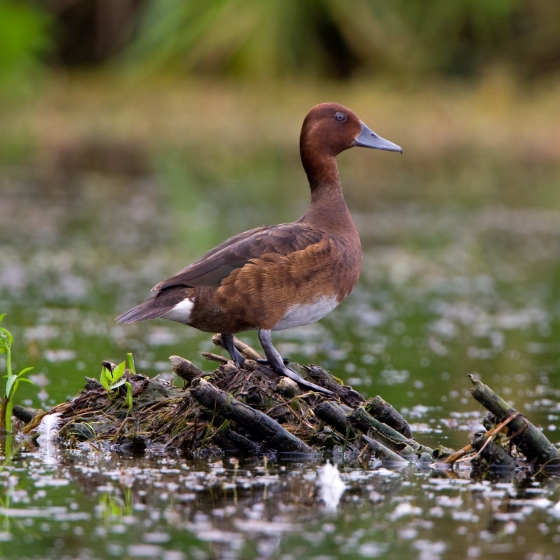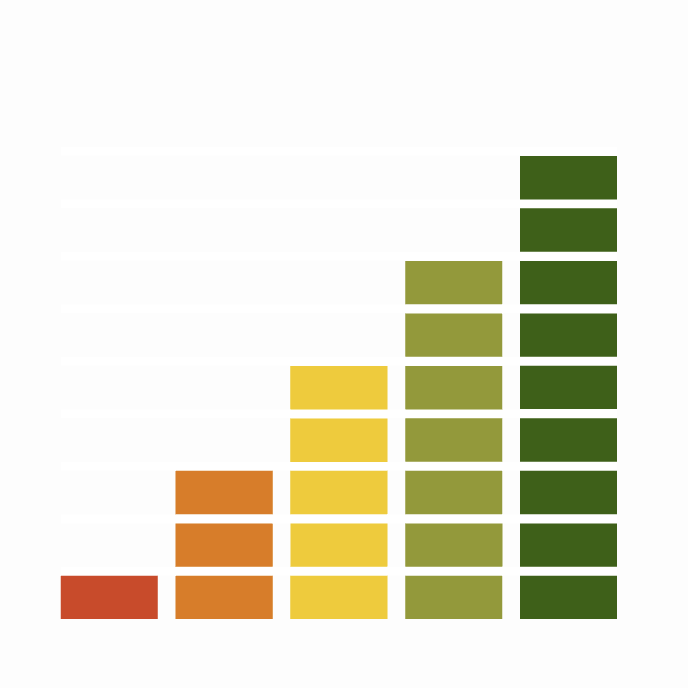Ferruginous Duck

Introduction
The male Ferruginous Duck is a handsome chestnut-coloured diving duck, small in size, and a rare visitor from eastern Europe. Most records come from south-east England during the winter months.

Key Stats
Status and Trends
Conservation Status
Population Size
Population Change
Ferruginous Duck is a rare bird in the UK with fewer than 10 records per year on average [Bacon et al. 2024]. Although breeding was suspected in 2004 and 2006 [Holling & the Rare Breeding Birds Panel 2010], there have been no confirmed breeding records for this species. The European population status is unknown [BirdLife International 2021].
Distribution
Ferruginous Ducks mostly winter in southern Britain with clusters of occupied 10-km squares around Chew Valley Lake in Avon, the Thames Valley, Norfolk Broads and the East Midlands. They generally associate with Pochards, with which they are likely to make local movements, so these clusters of sightings may relate to a single bird visiting nearby sites within and across winters.
Occupied 10-km squares in UK
2007/08–10/11
or view it on Bird Atlas Mapstore.
2008–11
or view it on Bird Atlas Mapstore.
European Distribution Map
Distribution Change
Change in occupied 10-km squares in the UK
from 1981–84 to 2007–11
or view it on Bird Atlas Mapstore.
from 1968–72 to 2008–11
or view it on Bird Atlas Mapstore.
Seasonality
Ferruginous Duck is a scarce vagrant, usually detected in winter.
Weekly pattern of occurrence
The graph shows when the species is present in the UK, with taller bars indicating a higher likelihood of encountering the species in appropriate regions and habitats.

Movement
Britain & Ireland movement
European movements
EuroBirdPortal uses birdwatcher's records, such as those logged in BirdTrack to map the flows of birds as they arrive and depart Europe. See maps for this species here.
The Eurasian-African Migration Atlas shows movements of individual birds ringed or recovered in Europe. See maps for this species here.
Biology
Survival and Longevity
Survival is shown as the proportion of birds surviving from one year to the next and is derived from bird ringing data. It can also be used to estimate how long birds typically live.
Classification, names and codes
Classification and Codes
- Order: Anseriformes
- Family: Anatidae
- Scientific name: Aythya nyroca
- Authority: Güldenstädt, 1770
- BTO 2-letter code: FD
- BTO 5-letter code: FERDU
- Euring code number: 2020
Alternate species names
- Catalan: morell xocolater
- Czech: polák malý
- Danish: Hvidøjet And
- Dutch: Witoogeend
- Estonian: valgesilm-vart e. ruskevart
- Finnish: ruskosotka
- French: Fuligule nyroca
- German: Moorente
- Hungarian: cigányréce
- Icelandic: Jarpönd
- Irish: Póiseard Súilbhán
- Italian: Moretta tabaccata
- Latvian: baltacis
- Lithuanian: paprastoji rude
- Norwegian: Hvitøyeand
- Polish: podgorzalka (zwyczajna)
- Portuguese: pêrra
- Slovak: chochlacka bielooká
- Slovenian: kostanjevka
- Spanish: Porrón pardo
- Swedish: vitögd dykand
- Welsh: Hwyaden Lygadwen
More Evidence
More evidence from Conservation Evidence.com
Partners
Citing BirdFacts
If you wish to cite particular content in this page (e.g. a specific value) it is best to use the original sources as linked in the page. For a more general citation of the whole page please use: BTO (20XX) BirdFacts Species: profiles of birds occurring in the United Kingdom. BTO, Thetford (www.bto.org/birdfacts, accessed on xx/xx/xxxx).

